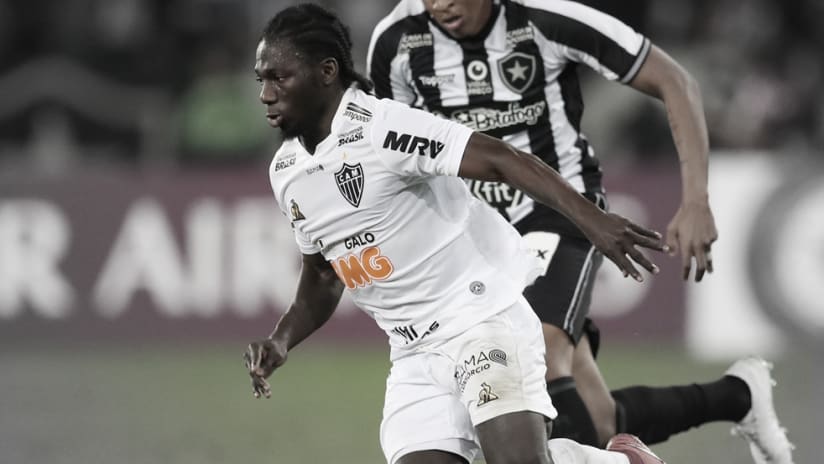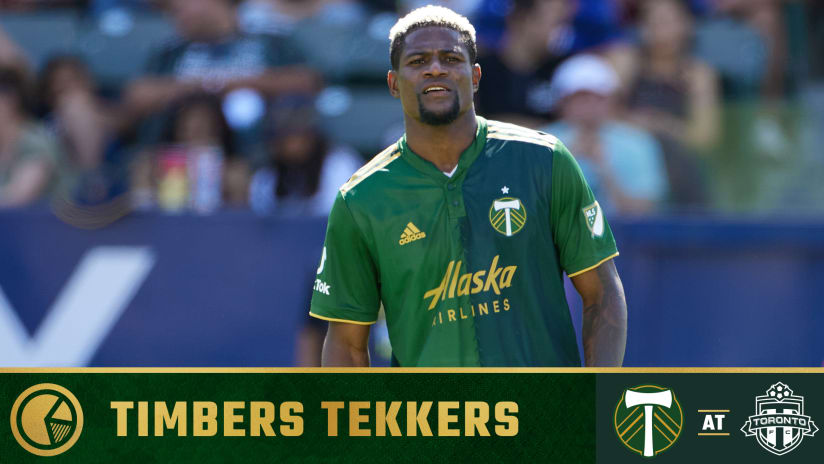PORTLAND, Ore. — He describes himself as a right winger, something that helps define the territory on the field he’s most likely to occupy. But the qualities that define Yimmi Chara’s game will be more important than the position he’ll take on the field. True, using a Designated Player spot to bolster the team’s wing options was an expressed goal of the Portland Timbers’ offseason – and with that goal, expressed, comes expectations of his contribution – but what, exactly, Chara does on the wing will dictate what kind of boost the Timbers bought.
Though he’s been primarily used on the right side during his career, Portland’s latest arrival is also capable of playing on the left, with coaches also, on rare occasions, using him as part of a tandem at forward. As Timbers head coach Giovanni Savarese said in the club’s announcement, Chara is more than just a right wing. “[He] can play in a variety of positions.” In each of those positions, though, his main physical asset is obvious. In most games Chara plays, he’ll be among the fastest players on the field.
Beyond a pure positional upgrade, that speed adds an important element to the Timbers. Though the team has been one of the better counter-attacking units in MLS over the last two years, the personnel that’s created those chances isn’t exactly known for its foot speed. Neither Sebastíån Blanco nor Jeremy Ebobisse are slow, but they also aren’t players who we see regularly racing past defenders. The same goes for Diego Valeri, whose ability to break a defense with his creativity is more renown than his straight-line speed. With the possible exception of another winger, Andy Polo, the Timbers’ fastest players over the last few years have occupied deeper positions, like Yimmi’s brother Diego in midfield, or departed fullback Alvas Powell.
The highlight video above that the team produced as part of Chara’s introduction flashes that speed; then again, it is highlight video. By definition, it emphasizes the positive. But within those clips you can see assets that don’t fluctuate from frame to frame. His off-ball movement, particularly in and entering the penalty area, helps explain why, throughout his career, his goal rate has consistently been at near one goal-per-five games. Extend that math to a Major League Soccer season and adjust for the league’s scoring trends and you have an upgrade on what the Timbers have gotten over the last two years at Chara’s projected position.
The clip also gives you an idea of his finishing ability, with both his right and left foot. What it doesn’t provide, though, is a sense of how the 28-year-old fits when his team doesn’t have the ball. Those qualities don’t make for great intro-video highlights, but Chara’s defensive ability could also prove a plus, with the speed he flashes in his more memorable moments also allowing him to get into attack despite a willingness to contribute closer to his team’s goal. “His work ethic and determination will make us a more competitive team,” Savarese said, and though his Designated Player label means most will expect assists and goals, Chara’s all-around game means he could be a valuable contributor if he had, say, a six-goal, four-assist season.
Obviously, though, he’s capable of more. Because of his position and the type of player he is, Chara’s offensive numbers are especially sensitive to how he’s used, allowing him to profile as more of a scoring threat in, for example, a three-attacker scheme than if he is used in more of a pure, wide midfield role. It’s part of the reason why, when you look at his scoring record, you see multiple seasons of double-digit goals (2013, 2014, 2018) interspersed with more modest totals. In search of more scoring threats, the Timbers will expect him to contribute at the attacking end of the field, but as we’ve seen over Savarese’s two years as head coach, Portland often, and especially on the road, employs schemes that can ask a lot of their wide midfielders.
During his time in Brazil, Chara scored once every 803 minutes in Serie A. In Mexico, his goal-rate was one every 617 minutes across 45 appearances with Monterrey. During two seasons back in Colombia with Junior in 2018 and 2019, though, he scored once every 166 minutes. Chara’s track record says he’s capable of providing goals, though scoring is not the only thing he’s been asked to do.
Ultimately, and whether it shows up in the game’s most analyzed numbers, Chara is being brought in to have a major impact. All Designated Players are. But whether you look at this move in terms of positional need, the player’s quality, or what his name implies about the qualities he could bring, Chara carries the potential to be a significant improvement. There is after all, a reason why the Timbers spent “10 years,” in general manager Gavin Wilkinson’s words, trying to get this player to Portland.












